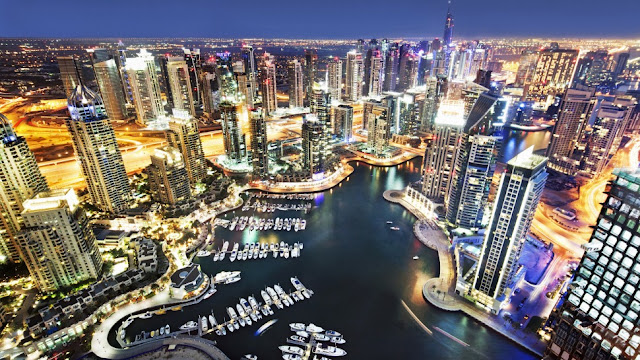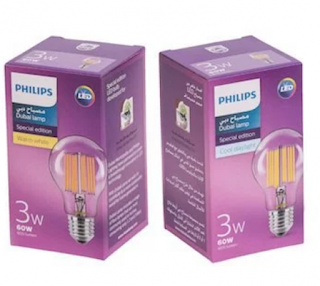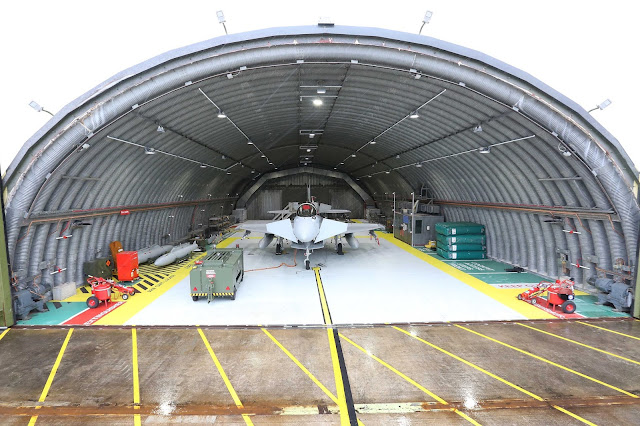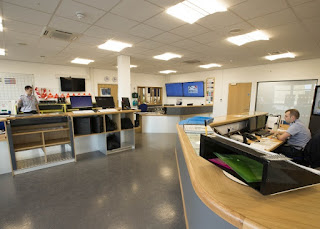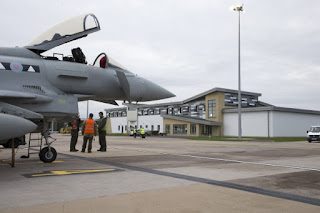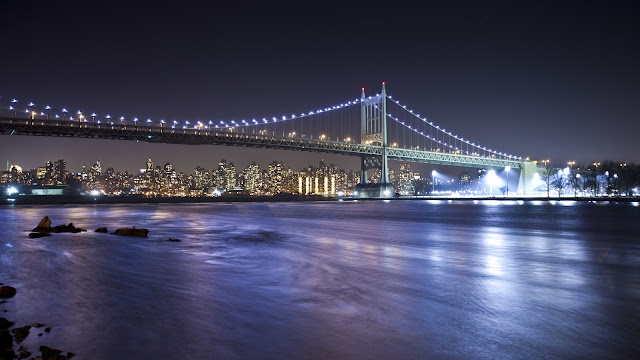9
Will Tunable Street Light Breakthrough Silence LED Critics?
Comments off · Posted by admin in LED
Will tunable street light breakthrough silence LED critics? PLUS: Smart street lights tell cities when to salt frozen roads. AND: LED protest signs take centre stage at demonstrations. Lux Today 7 February 2017.
energy efficient lighting · led lighting · lux today · Novel Energy Lighting · smart street lights · tunable street lights
6
Dubai rules all new properties must fit Philips LED lamps
Comments off · Posted by admin in LED, LED panels, LED Spots, LED Tubes, Philips LED
Fitting Philips ‘Dubai Lamp’, will be made the basic requirement for getting a Building Completion Certificate in Dubai.
Philips struck up a good deal!.. All new buildings in Dubai will soon be compelled by law to install specific LED lamps, the municipality has ruled, after striking a deal with Philips Lighting to supply millions of light sources to the emirate.
Authorities in Dubai signed a five-year contract with Philips to create the ‘Dubai Lamp’, which, it it is claimed, will be the first commercially available 200 lumen per Watt LED lamp.
The new fixtures will replace 80 percent of traditional lights currently in the emirate’s residential buildings, and, as of this year, all new buildings constructed in the city will have have to feature the Philips LED.
Fitting LED in new buildings will be made the basic requirement for getting a Building Completion Certificate, by the end of this year.
The initiative will initially focus on new buildings and big complexes such as schools, hospitals, mosques and shopping centres. A study will also be undertaken to develop a strategy of implementation for older buildings, in an attempt to ensure that the scheme ensures a wider legacy and that energy savings and a positive environmental impact continue to grow overtime.
Philips has been commissioned by the Dubai authorities to manufacture and supply two million of the ‘Dubai Lamps’, which will not contain mercury or generate heat. The Dubai Municipality plans to install 10 million Dubai Lamps before the end of 2021.
‘It will be made the basic requirement for getting a building completion certificate. This will be beneficial for both sides. The owner of the building will be able to save a lot of money on energy charges and we will able to protect the environment,’ Hussain Nasser Lootah, director general of Dubai Municipality, told The National.
‘In the beginning, we will concentrate on new buildings and we will complete a study of old buildings to see what can be done.’
Lootah said the latest agreement which is in line with government directives, supported the Dubai Integrated Energy Strategy, which targets a 30 percent reduction in energy consumption by 2030, and the Dubai Carbon Abatement Strategy, which is aimed at reducing carbon emissions by 16 per cent by 2021.
The lamps will be available in four models, both in cool daylight and warm white colours. That includes 1W candle lamps to replace the 25W incandescent lamp, 2W bulbs to replace 40W incandescent lamps, 3W bulbs to replace 60W incandescent lamps, and the 3W MR16 Spot to replace 50W halogen spots.
Novel Energy Lighting supplies the full range of Philips LED lamps, tubes, and luminaires. Please visit us today, or email: sales@novelenergylighting.com or call (0208-540-8287) to discuss you project needs.
dubai lighting · LED lamps · Novel Energy Lighting · philips led · Philips LED bulbs · philips led luminaires · Philips led panels · philips led tubes · philips lighting
Pioneering smart-lighting revolutionises European city. PLUS: President Obama gives Detroit an LED parting gift. AND: Australia launches free LED luminaire scheme. Lux 31 January 2017
detroit lighting · energy efficient lighting · led street lighting · Novel Energy Lighting · smart lighting · smart phone lighting
27
LED helps to make RAF more environmentally friendly
Comments off · Posted by admin in LED, LED panels
Despite facing severe budget restraints, a project has been delivered that is both energy efficient and sustainable and the RAF’s decision to use LED lighting, for one of first times on a new project, played an important role.
The building has been so well received within the defence community that it has been awarded the Ministry of Defence’s prestigious Sanctuary Award for Sustainability.
RAF Lossiemouth often bears the brunt of the West’s increasingly fractious relationship with Russia, with RAF Typhoon fighters being dispatched from the base on a regular basis to intercept Russian aircraft, which often play cat and mouse with Britain’s air defences. This means the base is constantly in use.
Sustainability was put at the heart of the project and energy efficiency was key. The new building and the refurbishment of the older buildings also had to be completed in a robust fashion, so as to ensure long, low-cost use.
In order achieve these aims, LED was quickly considered and pitched.
‘There were a number compelling reasons to change the lighting in the older facilities, principally because the buildings involved are used by the squadron 24 hours a day. But like any project that involves spending public money, it had to be justified,’ commented senior project manager at the Defence Infrastructure Organisation, Jim Ellistone , who worked on the project.
The new building would have a number of uses, requiring different levels of lighting. Besides the executive and administrative offices, the new headquarters building would provide a state of the art secure facility that would be used to plan and brief complex flying operations.
The building would also accommodates the Squadron’s engineering and logistics facilities and the Survival Equipment Section, which maintains all of the high tech equipment worn by Typhoon pilots during flight.
‘Everyone involved in the process quickly recognised the benefits of new lighting, the figures showed that, due to energy savings, the project would pay for itself in just over four years,’ Ellistone added.
In defence projects, the cheapest capital option is often used, due to the budget constraints that the MoD is placed under by the government of the day, however the benefits of LED were quickly provable to authorities.
‘This was an easy change to sell and was, in many ways, like pushing on an open door. The benefits of LED are now well established and we knew that a case for the technology had to be put forward at the first planning stage,’ Ellistone commented.
The highly intricate work that RAF engineers have to carry out on the Typhoon fighters, which are some of the RAF’s newest and most agile aircraft, means that excellent light quality is required. Such is the 24-hour nature of the base, repairs could be needed any time during the the day and night.
The aircraft are stored under concrete Cold War era Hardened Aircraft Shelters (HAS), which had not been internally upgraded since the days of Ronald Reagan and Mikhail Gorbachev. Energy efficient LEDs, offering the necessary light levels were installed as replacements to older models. LEDs were also used in the lines on the base’s concrete floor, which the aircraft use as guidance when they pull forward.
‘We had to be careful when specifying fixtures for the HAS, when the jet engines run in the hangers, fumes come from the wings and rise upwards,’ Ellistone said of the work. ‘We had to make sure, in these circumstances that the lights did not melt.’
The main squadron headquarters were delivered a month early, with a saving on the original tender target price of more than £1 million.
In reviewing the project on completion, the Combined Project Delivery Team came to the conclusion that a ‘real and deep sustainability gain’ was made by ‘stepping back’ to look at the fundamentals of what they were being asked to do.
This project is an example of reasoned arguments being used to build up a case for change and then, in timely fashion, a sustainable solution being agreed and delivered on time and within budget.
Visit www.novelenergylighting.com to explore our range of office and warehouse LED lighting, or call us today: 0208-540-8287
led hanger lighting · led high bays · led lighting · led office lighting · led panels · led tubes · led warehouse lighting · Novel Energy Lighting
Scientist who discovered human centric lighting shares tips with Lux. PLUS: Lighting based indoor positioning set to revolutionise US stores. AND: Health fears makes city think twice about LED. Lux Today 24 January 2017
human centric lighting · led office lighting · led panels · led tubes · lifi · light positioning · Novel Energy Lighting
12
Lighting industry needs to ‘wake up’ to IoT hack threat
Comments off · Posted by admin in LED
 |
| Ken Munro, the UK’s leading ‘ethical hacker’ speaking at this year’s LuxLive |
connected home technologies · connected lighting · internet of things · iot · iot security · led lighting · Novel Energy Lighting · trojan horse
While all the sound and fury has been coming from the human-centric lobby, there’s been a quiet revolution going on in the agricultural sector. LED technology has brought massive change to the lighting for horticulture sector and the rearing of livestock. By creating LED systems that offer special spectral outputs, crop and livestock production is enhanced, reducing costs and increasing profits for farmers, while at the same time improving the quality of the product.
Historically, lighting in agriculture was seen purely from a human standpoint. It may be that our light sources left us with little option than to make the best use, or what we perceived as best use, of those sources. Now that we have a ‘tunable’ light source we are able to focus on providing the plants, birds and beasts with the best growing environment.
Horticultural lighting
Research has identified specific wavelengths that are needed to promote growth and fruiting in plants. By applying LED technology it has been possible to create dedicated lighting systems.
For example: chlorophyll absorption occurs in two ranges, 400-500nm and 600-700nm, and that means plants grow most efficiently under blue and red light. It’s worth noting here that plants are seen to be green because they reflect that wavelength. Green light is of no use to the plant at all.
The amount of light required for photosynthesis to take place matters because there is a direct relationship between the two, up to a point. There is a light saturation point where the plant cannot absorb any more chlorophyll, at around 700 micromoles per m2 per second. Any further illumination is a waste of energy (and money).
EXPLAINER: Micromoles
Lighting for plants is measured in micro-moles per second. Micromoles measure the number of photons that pass through a target area; one micromole of light equals a little over 62 quadrillion photons. That sounds very complicated but a new range of spectrometers is now available that provides micromoles per m2 per second readings as simply as they do readings in Lux.
Artificial lighting has been used historically to help extend the ‘growing day’ but we are seeing a move towards total managed environments where artificial lighting provides 100 percent of the illumination in the growing sheds. The LED systems are tuned to provide specific wavelengths according to the growth cycle of the specific plants.
Blue light can stimulate flowers to open up, beginning the plant’s daytime circadian cycle
Red light (and enhanced red light) is good for stem growth and flowering
Infra-red light can mimic the effect of sunset
The ratio between blue and red LEDs is specific to the plant type.
Poultry shed lighting
Getting the light right for poultry breeding is essential, because getting it wrong can be catastrophic for the population of a poultry shed. Stressed fowl become aggressive and it has been known for entire flocks of chickens and turkeys to be destroyed overnight as a consequence of the violence wreaked by the birds.
Research has identified the wavelengths that domestic fowl best respond to and it has been possible to create lighting that mimics the forest under-canopy lighting that birds ‘remember’ in their genetic make-up. This means that domestic fowl have peak sensitivity in the blue-green range, from around 500nm – 700nm, but there is also a substantial response in the UV(A) range – chickens can see ultra violet light that is invisible to humans.
Light at the red end of the spectrum needs to be handled very carefully. Red light promotes sexual activity and growth rate, though it is also thought that the excitation caused by the red wavelength can also be the cause of aggressive behaviour in well-populated sheds.
For the producer, the ideal situation is to create an environment where poultry do not exhibit stressful behaviour, such as over-eating. Layers also need to produce eggs with consistent sizes and ample shell thickness and fowl grown for their meat need sufficient environmental stimulation so that they move around, helping muscle development.
An LED system using specific wavelengths during the course of the day can result in an ideal outcome for the producer. It will produce calm birds that eat less but convert more of that food into body mass, they also come to maturity more quickly in a stress-free state, which means better meat for the customer.
Pig and beef unit lighting
Generally speaking, a lot of research still needs to be done on lighting for pigs and cattle. As we get closer to the human condition, the effect of 100 percent artificial lighting environments suggest that the situation is complicated.
Some of the data is to be expected:
24-hour illumination of pig sheds has reported detrimental effects
24-hour darkness is not an optimal condition
Piglets and weanlings benefit from additional daylight hours, but reproductive behaviour in boars is enhanced by reduced daylight hours. It all sounds very human.
From the point of view of the unit manager, one piece of information is valuable; neither pigs nor cattle appear to have any response to red light. This means that units can be supervised during the night-time by using red lighting – sufficient for security and over-seeing without upsetting the desired circadian rhythms of the beasts themselves.
As research data becomes available, it will be possible to design a lighting regime for pig units and cattle units that is cost-effective for the producer and most beneficial for the beasts themselves.
In summary, as the world’s demand for food increases, producers will need to find the most efficient ways of raising crops and livestock. For those products to have any real nutritional value for the (literal) consumer, then it is beholden on those producers to make sure that growing conditions are optimised for each species. LED lighting is well-placed to deliver the appropriate illumination.
agricultural lighting · horticultural lighting · led agriculture · led lighting · Novel Energy Lighting · poultry lighting · tunable light
15
Niagara Falls unveils spectacular LED lighting upgrade
Comments off · Posted by admin in LED
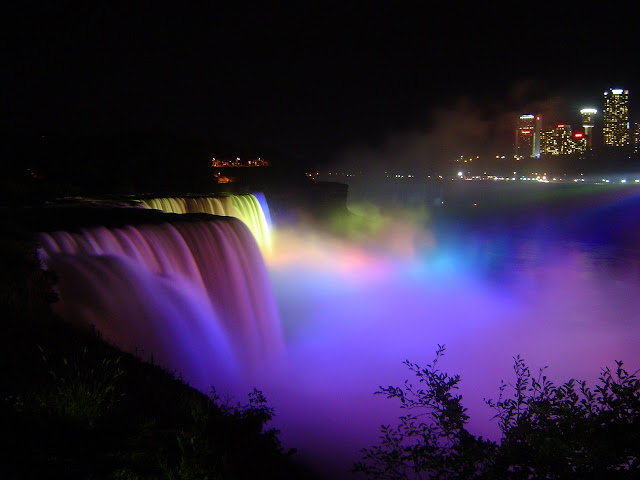 Niagara Falls unveils its dazzling new $4 million LED makeover which illuminates the water with a rainbow of colour |
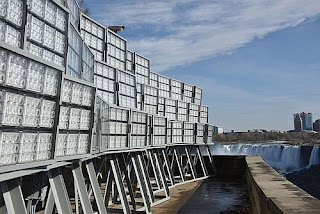
The new system is also installed at the Table Rock Centre and includes 1400 individual LED luminaires supplied by Stanley Electric.
‘The newly enhanced nightly illumination of Niagara Falls will capture the imagination of the millions of visitors, who come to witness the sheer power and beauty that is Niagara,’ stated Mark Thomas, chair of the Niagara Falls Illumination Board. ‘We are very fortunate to have community stakeholders on both sides of the border who have supported our vision and this project from the very start. These enhancements will help us to create an overall guest experience that will continue to shine a positive light on Niagara for people from throughout the world, as reported in LEDs magazine.
The Niagara Falls were previously lit by xenon sources with the light projected from the roof of the Table Rock Centre, and that system had been in place for some 20 years. Salex president Nick Puopolo led the process of retrofitting the system with LED lighting, bringing a proposal to the Niagara Falls Illumination Board along with Ecco Electric and ultimately participating in bringing the idea to fruition. Salex is a lighting and controls sales agency and Ecco is an electrical contractor.
The new system is also installed at the Table Rock Centre and includes 1400 individual LED luminaires supplied by Stanley Electric. The mix of red, green, blue, and white luminaires are grouped into 68 zones of control, 20 for the American Falls and 48 for the Canadian Falls. Salex said the system can deliver more than 18,000 different color combinations.
The SSL retrofit project was intended both to enhance the falls experience for visitors and to deliver the energy efficiency and longevity associated with LED lighting. Salex said the outdoor SSL system delivers light levels that are 4–14 times brighter than the xenon lighting depending on the colors being projected. Moreover, Salex said uniformity was much improved with light now filling gaps in the coverage of the prior system while the new lighting also delivers a “crisper visual image of the waterfalls.’
The LED system reduced energy consumption by 60 percent relative to the xenon lighting. And the consortium of companies behind the project designed it to operate relatively maintenance-free for 25 years.
landmark lighting · led effect lighting · led exterior lighting · led floods · led lighting · Niagara Falls Illumination · niagra falls lighting · Novel Energy Lighting · outdoor led · rgb led
8
New York’s bridges to get multi-million dollar LED facelift
Comments off · Posted by admin in LED

The George Washington Bridge, one of the most famous bridges in New York City, will get an LED overhaul as part of Governor Andrew Cuomo’s plan to revitalise New York’s river crossings.
Nine New York bridges will receive an LED overhaul during the first phase of the $500 million project, ranging from the Henry Hudson Bridge in the Bronx to the Crossbay Veterans Memorial Bridge in the Rockaways.
It is planned that the new lighting schemes will be able to be programmed to salute historic moments, sporting events and national occasions such as the Fourth of July.
This mirrors the Empire State Building and One World Trade Centre which already use their lighting schemes to salute major events, such as the election of a new president on the conclusion of a Super Bowl.
New York’s bridges will join the The Big River Crossing in Memphis, the Leonard P. Zakim–Bunker Hill Bridge in Boston, the Big Four Bridge in Louisville, and the Little Rock Bridges in Little Rock, Arkansaw, to embrace light shows.
It had been previously announced that Philips Lighting would supply interconnected LED-based lighting, and controls technology for the new Tappan Zee Bridge that is currently under construction in New York’s Hudson River Valley, but the new announcement, from New York Governor Andrew Cuomo, marks a significant widening of the project.
Under the Governor’s plan, New York will also redesign tunnel plazas with cutting-edge veils equipped with LED capability, as well as introducing state-of-the-art automatic toll booths.
The New York Crossings Project will include Whitestone Bridge, Throgs Neck Bridge, RFK Triborough Bridge, Queens Midtown Tunnel, Hugh L. Carey Brooklyn Battery Tunnel, Verrazano-Narrows Bridge, Marine Parkway-Gil Hodges Memorial Bridge, and Cross Bay Veterans Memorial Bridge. The coordinated lighting plan will also include the George Washington Bridge, which is operated by the Port Authority of New York and New Jersey.
The NY bridge lighting plan was inspired by earlier New York building projects, which were conceived not only as practical additions to the city, but as public art works, such as the New York State Capitol, Grand Central Terminal, the original Penn Station and the Central Mall Mosaics at Jones Beach.
It is expected that the new LED lighting will use 40 to 80 percent less power and last six times longer than other types of roadway lighting.
Termed ‘The City That Never Sleeps’ the dusk until dawn lighting schedule will illuminate crossings with spectacular, multi-color light shows that will be visible for miles, with the hope of turning New York’s bridges into international tourist attractions with the potential to drive additional tourism revenue. The LED installations are set to begin in January 2017.
The initial phase of London’s own version of the New York bridge project will reach its final stage on Wednesday, when a winner will be announced of the ‘Illuminated River’ design competition, which will see all of London’s major river crossings receive a lighting revamp from the winning design agency. The schemes that are in the running can be seen here.
bridge lighting · led bright · led lighting · Novel Energy Lighting · tapan zee bridge · urban lighting
Streetlights powered by footsteps are unveiled in Las Vegas. PLUS: World’s first live li-fi test takes place at LuxLive. AND: Lux Award winners revealed at a ceremony in London. Lux Today December 6th 2016.
led street lighting · led streetlight · li-fi · lux today · luxlive · Novel Energy Lighting · street lighting

